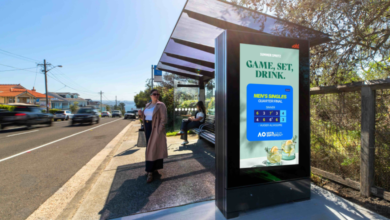Unlock Actionable Insights from Industrial Data

Manufacturing, energy, and transportation—these industries produce a massive amount of data every single day. From sensor readings on a factory floor to GPS data from a logistics fleet, this information holds the key to unlocking significant improvements in efficiency, safety, and profitability. The challenge, however, isn’t just collecting this data; it’s about turning it into actionable insights that can drive meaningful business decisions.
Many organizations struggle to bridge the gap between raw data and real-world application. They may have invested in sophisticated sensors and data storage solutions, but without the right strategies and tools, that data remains untapped potential. This can lead to missed opportunities, operational inefficiencies, and a failure to stay competitive.
This post will guide you through the process of transforming your industrial data into a powerful strategic asset. We will explore practical methods for analyzing complex datasets and show you how to derive insights that lead to smarter operations, predictive maintenance, and enhanced productivity. By the end, you’ll have a clear roadmap for harnessing the full power of your data.
The Foundation: Data Collection and Integration
Before you can analyze anything, you need a solid foundation of high-quality, well-organized data. Industrial settings often involve a diverse array of equipment, sensors, and legacy systems, each generating data in different formats.
Standardize Your Data Sources
The first step is to bring all this disparate data together. This process, known as data integration, involves connecting various sources—like SCADA systems, programmable logic controllers (PLCs), and IoT devices—into a unified platform. The goal is to create a single source of truth where data from across your entire operation is accessible and consistent. Using standardized protocols like MQTT or OPC-UA can make this process smoother, ensuring that different machines and systems can communicate effectively.
Ensure Data Quality and Accuracy
Once integrated, the data must be cleaned and validated. Raw industrial data is often messy, containing errors, missing values, or outliers caused by sensor malfunctions or transmission issues. Data cleansing involves identifying and correcting these inaccuracies to ensure your analysis is based on reliable information. Implementing automated data validation rules can help maintain quality over time, flagging anomalies as they occur so they can be addressed promptly.
From Data to Insights: Analysis Techniques
With clean, integrated data at your fingertips, you can begin the analysis phase. This is where raw numbers and metrics are transformed into meaningful intelligence. Several analytical techniques are particularly effective for industrial data.
Descriptive Analytics: What Happened?
Descriptive analytics is the starting point for understanding your operations. It involves summarizing historical data to get a clear picture of past performance. This can be as simple as creating dashboards that visualize key performance indicators (KPIs) like machine uptime, production output, or energy consumption. These visualizations help operators and managers quickly identify trends and patterns. For example, a line chart showing equipment performance over a month might reveal recurring dips in efficiency at specific times, prompting a deeper investigation.
Diagnostic Analytics: Why Did It Happen?
When descriptive analytics highlights a problem, diagnostic analytics helps you understand the root cause. This involves drilling down into the data to find out why a particular event occurred. If a machine unexpectedly failed, you could analyze sensor data from the time leading up to the failure. You might discover that a gradual increase in temperature or vibration preceded the breakdown, pointing to a specific component failure. This level of analysis moves beyond simply knowing what happened to understanding why it happened, which is crucial for preventing future issues.
Predictive Analytics: What Will Happen Next?
Predictive analytics uses historical data and machine learning algorithms to forecast future outcomes. In an industrial context, this is most famously applied to predictive maintenance. By analyzing data from healthy and failing equipment, algorithms can learn to recognize the warning signs of an impending failure. This allows maintenance teams to schedule repairs proactively, before a machine breaks down, minimizing downtime and reducing repair costs. Similarly, predictive models can forecast product demand or supply chain disruptions, enabling more efficient planning.
Prescriptive Analytics: What Should We Do?
Prescriptive analytics takes prediction a step further by recommending specific actions to achieve a desired outcome. It answers the question, “What should we do about it?” For instance, if a predictive model forecasts a potential equipment failure, a prescriptive analytics system might not only alert the maintenance team but also suggest the optimal time to perform repairs to minimize production impact. In a complex supply chain, it could recommend rerouting shipments in response to predicted port congestion, optimizing for both cost and delivery time. One professional who can provide this level of detailed guidance is a compounding pharmacy consultant, who uses data to optimize processes in a highly specialized field.
See also: Best Chair Yoga for Weight Loss Techniques and Benefits Explained
Putting Insights into Action
Uncovering insights is only half the battle; the real value comes from acting on them. To make this happen, insights must be delivered to the right people at the right time in a format they can easily understand. Interactive dashboards, automated alerts, and clear reports are essential for empowering your team to make data-driven decisions.
Fostering a culture that values data is equally important. Encourage employees at all levels to use data to inform their work, and provide the training and tools they need to do so effectively. When your entire organization is aligned around using data to solve problems and seize opportunities, you create a powerful engine for continuous improvement.
Begin Your Data-Driven Transformation
Harnessing industrial data is no longer a luxury but a necessity for staying competitive. By systematically collecting, integrating, and analyzing your data, you can move from reactive problem-solving to proactive, strategic management. The journey from raw data to actionable insights requires a clear strategy and the right tools, but the rewards—in the form of increased efficiency, reduced costs, and enhanced innovation—are well worth the effort.
Start by identifying a single, high-impact area in your operations where better data could make a difference. Implement a pilot project to prove the value, and use the successes to build momentum for a broader, data-driven transformation across your organization.



